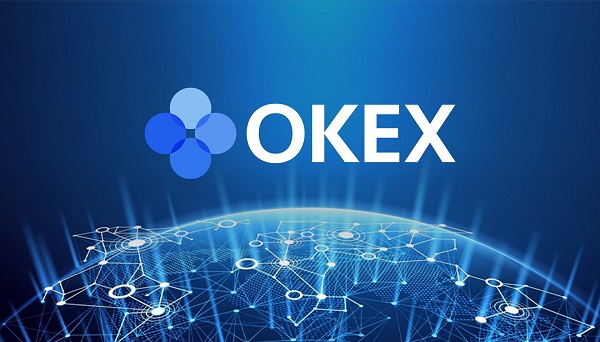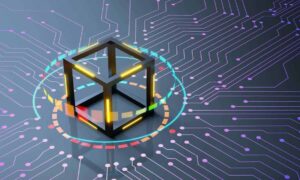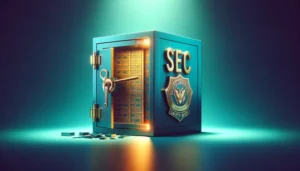Crypto synthetic assets, explained

What are crypto synthetic assets?
Blockchain-based financial instruments called crypto synthetic assets imitate the value and behavior of actual assets or financial instruments.
Crypto synthetic assets, also known as “synthetic assets,” are a class of digital financial instruments created to mimic the value and performance of actual financial assets or assets from the real world, such as stocks, commodities, currencies, or even other cryptocurrencies, without actually owning the underlying assets.
These artificial assets are produced using complex financial derivatives and smart contracts on blockchain platforms, mainly in decentralized finance (DeFi) ecosystems. The ability to create decentralized smart contracts on blockchain systems like Ethereum, use collateral to secure value, track target asset prices precisely and create flexible leveraged or derivative products are important characteristics of crypto synthetic assets.
DeFi customers now have access to a wider range of financial markets and assets, which lessens their reliance on conventional intermediaries. Users should take caution, though, as these instruments add complexity and risk, necessitating a thorough knowledge of their underlying workings and effects on investing strategies
Traditional vs. crypto synthetic assets
Traditional assets are tangible or monetary items like stocks, bonds and commodities exchanged on established financial markets. In contrast, crypto synthetic assets are digital representations built on blockchain technology and intended to resemble the value and performance of these conventional assets.
The fundamental distinction between traditional and crypto synthetic assets is that traditional assets are physical or paper-based, whereas crypto synthetic assets only exist in digital form on blockchain networks. While crypto synthetics have advantages over traditional assets in terms of accessibility, liquidity and programmability, they also come with unique risks and complexities.
Types of crypto synthetic assets
Crypto synthetic assets come in various forms, like synthetic stablecoins, tokenized commodities and equities, leveraged and inverse tokens, and yield-bearing synthetic assets.
Synthetic stablecoins
Digital tokens known as synthetic stablecoins are intended to mimic the value and stability of fiat money, such as the United States dollar or the euro. They give people a mechanism to exchange goods and services and store value in the cryptocurrency ecosystem without experiencing the volatility of cryptocurrencies.
One example of a synthetic stablecoin is sUSD, which is developed on the Synthetix platform. It aims to provide users with access to a stable form of digital cash that matches the value of the U.S. dollar.
Tokenized commodities and equities
Commodities and stocks that have been tokenized serve as digital representations of real-world assets like gold, oil, stocks and other commodities on blockchain networks. These synthetic assets allow for the decentralized fractional ownership and exchange of conventional assets.
An example of a synthetic asset that tracks the price of crude oil is sOIL, which is also developed on the Synthetix platform. Without really holding any oil, it enables investors to become more exposed to changes in the price.
Leveraged and inverse tokens
Synthetic assets, known as leveraged and inverse tokens, are developed to amplify or counteract the price changes of an underlying asset — inverse tokens profit when the underlying asset’s price decreases, while leveraged tokens magnify profits and losses.
For instance, BTC3L (Binance Leveraged Tokens) seeks to produce daily returns that are three times higher than the price of Bitcoin (BTC). BTC3L should climb by 3% if Bitcoin increases by 1%.
Yield-bearing synthetic assets
Within the DeFi ecosystem, yield-bearing synthetic assets give holders returns through staking or lending, providing a chance to generate passive income.
An example of a synthetic asset is cDAI, developed by the Compound protocol. Dai (DAI) stablecoins can be given to participate in lending operations on the Compound platform and earn interest. Since cDAI accrues interest to holders over time, it qualifies as a yield-bearing synthetic asset.
Applications of crypto synthetic assets
Crypto synthetic assets can be utilized by traders seeking increased profits, investors diversifying their holdings or DeFi aficionados engaged in yield farming.
Trading and investing opportunities
Crypto synthetic assets offer a gateway to a variety of trading and investment opportunities. They enable traders to engage in leveraged trading, increasing their exposure to market fluctuations and potentially generating bigger returns (or losses) than they could from more conventional trading.
Additionally, synthetic assets cover a wide range of underlying assets inside the crypto ecosystem, including stocks and commodities, giving investors a straightforward way to diversify their portfolios.
Yield farming and liquidity provision
Users who stake cryptographic synthetic assets in DeFi protocols can engage in yield farming, earning incentives in the form of extra synthetic assets or governance tokens for actively participating in liquidity provision and DeFi operations.
Synthetic assets also significantly increase liquidity pools and DeFi platforms’ overall liquidity, which is essential for facilitating effective trading, lending and borrowing within the DeFi ecosystem.
Risk management and hedging strategies
Synthetic assets provide strong risk management tools and hedging possibilities. Traders and investors can use inverse synthetic assets as efficient hedges to protect their portfolios from declines in the underlying assets.
Synthetic stablecoins also offer a decentralized alternative to conventional stablecoins, protecting the value of assets in the face of the market’s inherent volatility.
Role of DeFi in the creation and trading of synthetic assets
By enabling users to create, trade and diversify their portfolios with synthetic assets, DeFi democratizes finance by upending established financial systems and boosting financial inclusion worldwide.
The development and trade of synthetic assets are fundamental to changing the conventional financial environment, and DeFi is a key player in this process. DeFi platforms revolutionize how we interact with financial instruments by utilizing blockchain technology and smart contracts to make the creation, issue and trading of synthetic assets straightforward.
First, DeFi eliminates the need for intermediaries, improving accessibility and productivity. Users can issue tokens that replicate the value of real-world assets, such as equities, commodities and fiat currencies, by collateralizing cryptocurrencies.
Second, DeFi’s open and permissionless design encourages innovation by allowing programmers to test different synthetic asset designs and trading strategies. By providing consumers with 24/7 access to a wide variety of assets, this innovation has democratized access to international markets.
DeFi platforms also offer liquidity pools where users can easily trade synthetic assets. These systems promote yield farming by rewarding users for donating money and participating in the ecosystem.
Advantages of crypto synthetic assets
Crypto synthetic assets provide a rich tapestry of advantages, including diversification, leverage, DeFi engagement, liquidity augmentation and risk mitigation.
Cryptographic synthetic assets offer many benefits for the digital finance space. The ability to provide access to a variety of assets, including traditional stocks, commodities and currencies, is the most important of these advantages because it enables users to seamlessly diversify their portfolios within the cryptocurrency space, reducing risk and improving investment strategies.
These assets also open the door to leverage, allowing traders to increase their exposure to asset price volatility and perhaps generate higher returns. They play a crucial role in DeFi, enabling users to participate actively in yield farming and liquidity provision and earning rewards for doing so.
Additionally, synthetic assets provide the foundation for liquidity pools, boosting the overall liquidity of DeFi platforms — a crucial component for enabling effective trading and lending activities. These resources also serve as essential risk management tools, giving consumers the skills they need to protect their investments against erratic price fluctuations.
Challenges and Risks concerned with synthetic assets
While synthetic assets present novel opportunities and solutions, they are not without difficulties and hazards, such as smart contract weaknesses, liquidity issues, the unpredictability of regulations and oracle-related problems.
The use of synthetic assets in the crypto and blockchain industries comes with a number of risks and issues that need to be carefully considered. The possibility of smart contract flaws or exploits, which might lead to significant losses, is one of the main worries. For instance, in the infamous DAO attack of 2016, a smart contract vulnerability resulted in the theft of about $50 million worth of Ether (ETH), highlighting the risks posed by these complex financial instruments.
Another issue is market liquidity, as some synthetic assets may have less of it than their counterparts in the real world. This could result in price manipulation or slippage during trading, which would affect the stability of the market as a whole.
Furthermore, regulatory oversight continues to be a serious concern as governments throughout the world struggle to define and control these unique financial products. The continuing legal disputes and regulatory changes involving stablecoins like Tether (USDT) provide an example of the possible legal difficulties that synthetic assets may encounter.
Finally, over-reliance on oracle systems, which provide smart contracts access to real-world data, creates security risks. For instance, if an oracle is compromised, it may offer erroneous data, which may impact the utility and value of artificial assets that rely on it.













